In this blog post, we will explain how to install minikube on Ubuntu 22.04 step-by-step.
Minikube is an open-source tool that facilitates the local deployment of Kubernetes clusters. It is designed to simplify the process of learning and developing applications for Kubernetes by providing a lightweight, single-node Kubernetes cluster that runs on a user’s local machine.
Minikube is an excellent tool for those who want to experiment with Kubernetes features, test applications, and develop and debug containerized applications without the need for a full-scale, production-level Kubernetes cluster.
[ez-toc]
Prerequisites
- Pre-Install Ubuntu 22.04 system
- 2 GB RAM or more
- 2 CPU or more
- 20 GB free disk space
- Sudo used with admin access
- Reliable Internet Connectivity
- Docker or VirtualBox or KVM
Without any further delay, let’s jump into minikube installation steps.
1) Update Your System
Before starting the minikube installation, it is recommended to install all available updates on your system. Run following command.
$ sudo apt update $ sudo apt upgrade -y
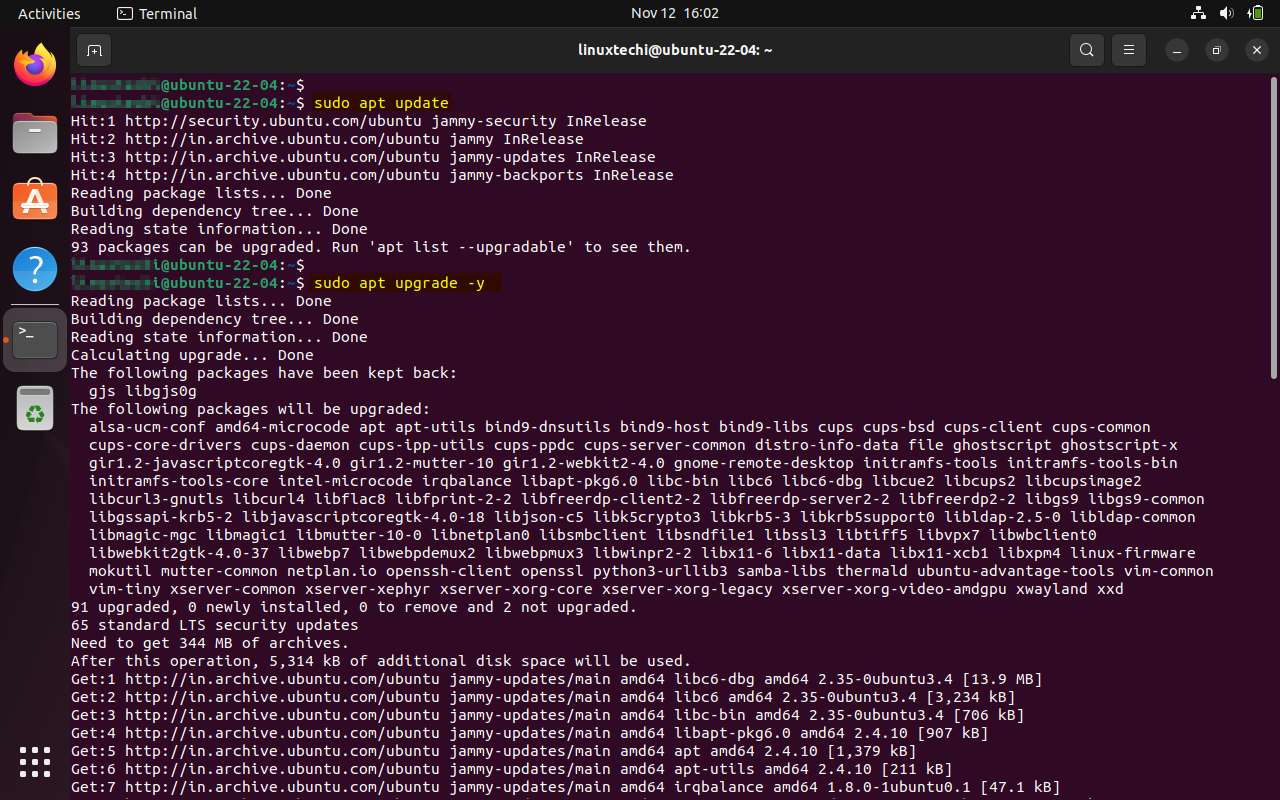
Once all the updates are installed then reboot your system.
$ sudo reboot
2) Install Docker
Minikube requires either docker or VirtualBox, in this post, we will be installing docker on Ubuntu 22.04 system. Run the following set of command one after the another to docker apt repository.
$ sudo apt install ca-certificates curl gnupg wget apt-transport-https -y $ sudo install -m 0755 -d /etc/apt/keyrings $ curl -fsSL https://download.docker.com/linux/ubuntu/gpg | sudo gpg --dearmor -o /etc/apt/keyrings/docker.gpg $ sudo chmod a+r /etc/apt/keyrings/docker.gpg $ echo \ "deb [arch="$(dpkg --print-architecture)" signed-by=/etc/apt/keyrings/docker.gpg] https://download.docker.com/linux/ubuntu \ "$(. /etc/os-release && echo "$VERSION_CODENAME")" stable" | \ sudo tee /etc/apt/sources.list.d/docker.list > /dev/null $ sudo apt update
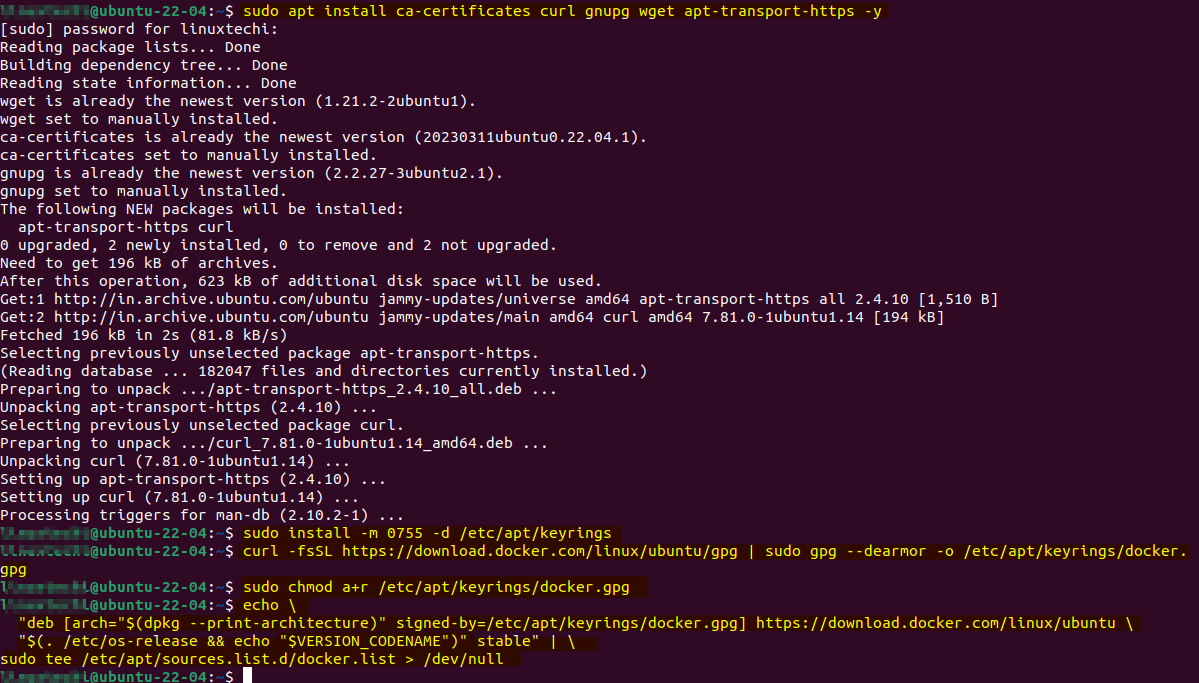
Next, install docker by running the following command.
$ sudo apt install -y docker-ce docker-ce-cli containerd.io docker-buildx-plugin docker-compose-plugin
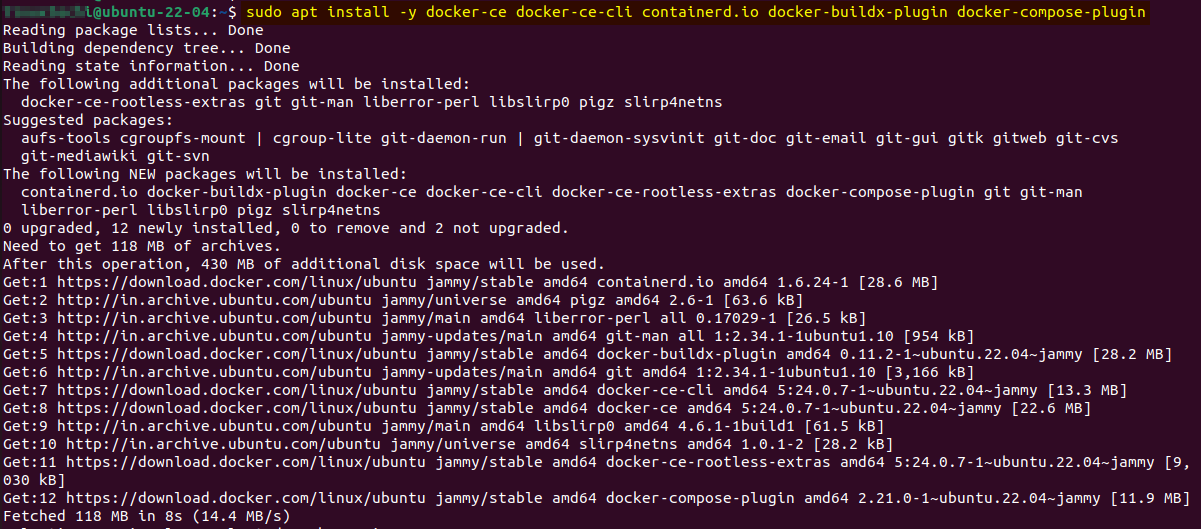
Add your local user to docker group so that your local user run docker commands without sudo.
$ sudo usermod -aG docker $USER $ newgrp docker
Note: To make above changes into the affect logout and login.
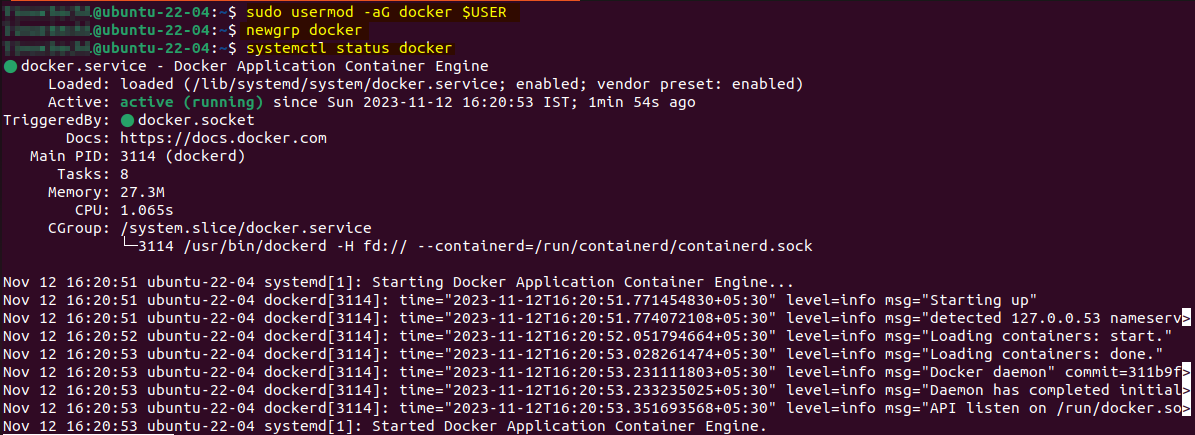
3) Download and Install Minikube Binary
To download and install minikube binary, run following commands,
$ curl -LO https://storage.googleapis.com/minikube/releases/latest/minikube-linux-amd64 $ sudo install minikube-linux-amd64 /usr/local/bin/minikube
To verify the minikube version, run
$ minikube version

4) Install Kubectl tool
Kubectl is a command line tool, used to interact with your Kubernetes cluster. So, to install kubectl run beneath curl command.
$ curl -LO https://storage.googleapis.com/kubernetes-release/release/`curl -s https://storage.googleapis.com/kubernetes-release/release/stable.txt`/bin/linux/amd64/kubectl
Next, set the executable permission on it and move to /usr/local/bin
$ chmod +x kubectl $ sudo mv kubectl /usr/local/bin/
Verify the kubectl version, run
$ kubectl version -o yaml
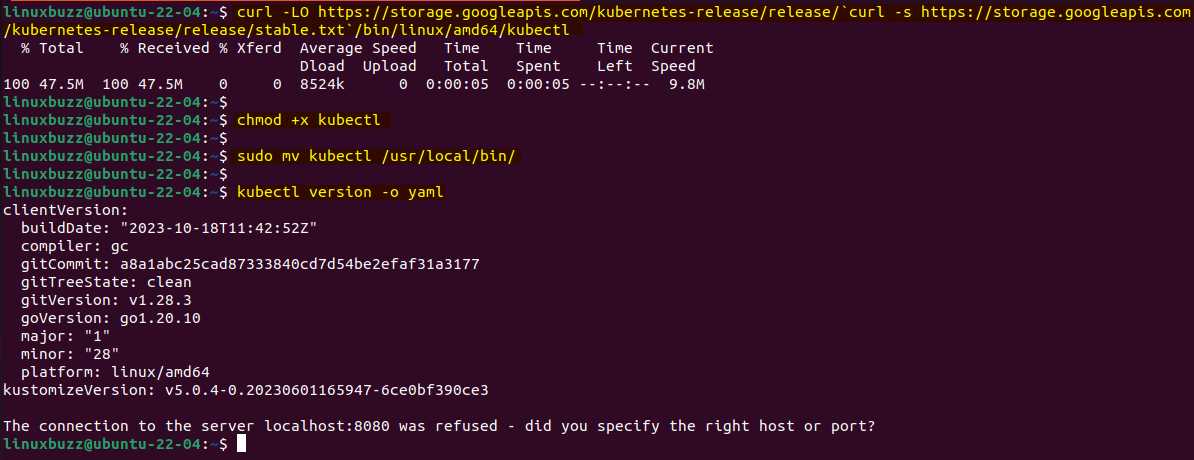
5) Start Minikube Cluster
Now that Minikube is installed, start a Kubernetes cluster using the following command:
$ minikube start --driver=docker
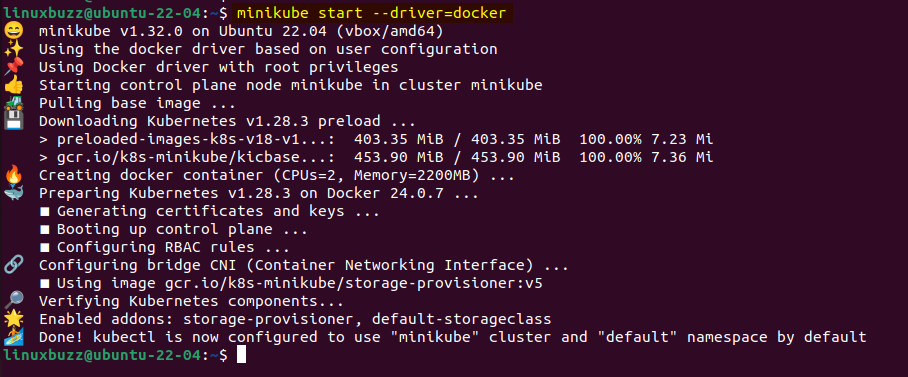
This command initializes a single-node Kubernetes cluster, and it might take a few minutes to download the necessary components.
Once the minikube has started, verify the status of your cluster, run
$ minikube status

6) Interact with Your Minikube Cluster
Use kubectl to interact with your Minikube Kubernetes cluster. For example, you can check the nodes in your cluster:
$ kubectl get nodes $ kubectl cluster-info

Try to deploy a sample nginx deployment, run following set of commands.
$ kubectl create deployment nginx-web --image=nginx $ kubectl expose deployment nginx-web --type NodePort --port=80 $ kubectl get deployment,pod,svc
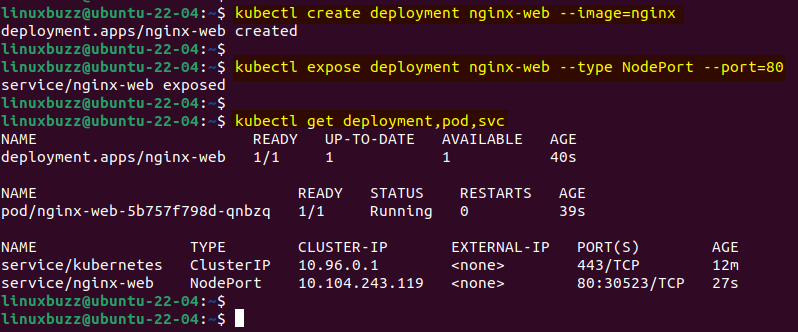
7) Managing Minikube Addons
If you want to add some additional functionality toy Kubernetes cluster like Kubernetes dashboard, ingress controller and more. You can enable these with addons. To view all the available addons, run
$ minikube addons list
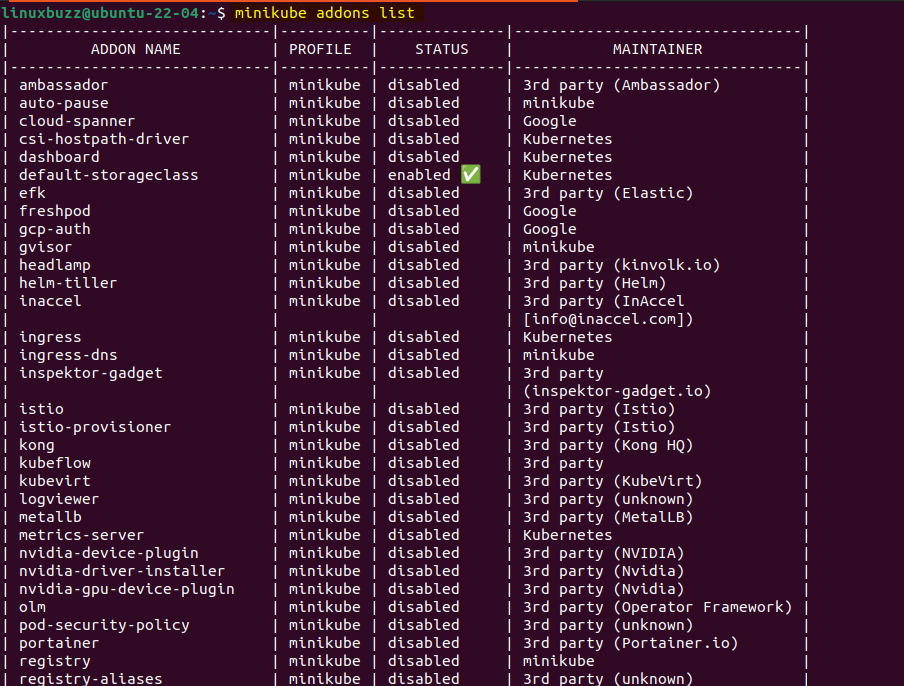
In order to enable addons, run
$ minikube addons enable dashboard $ minikube addons enable ingress
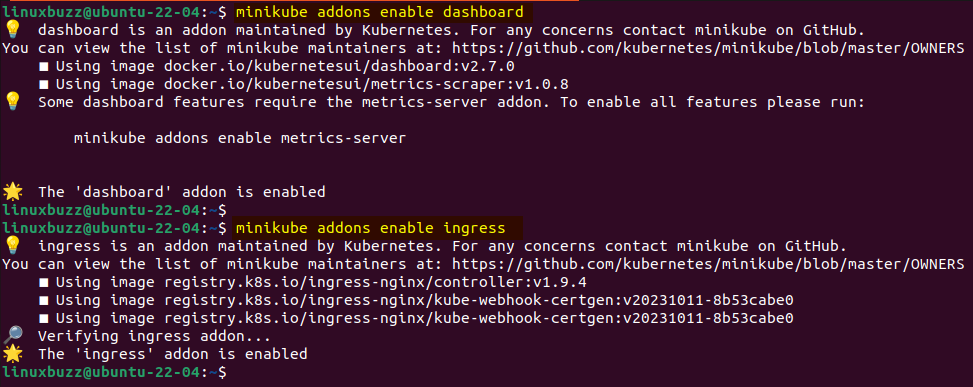
To start the Kubernetes dashboard run below command, it will automatically launch the dashboard in the web browser as shown below:
$ minikube dashboard

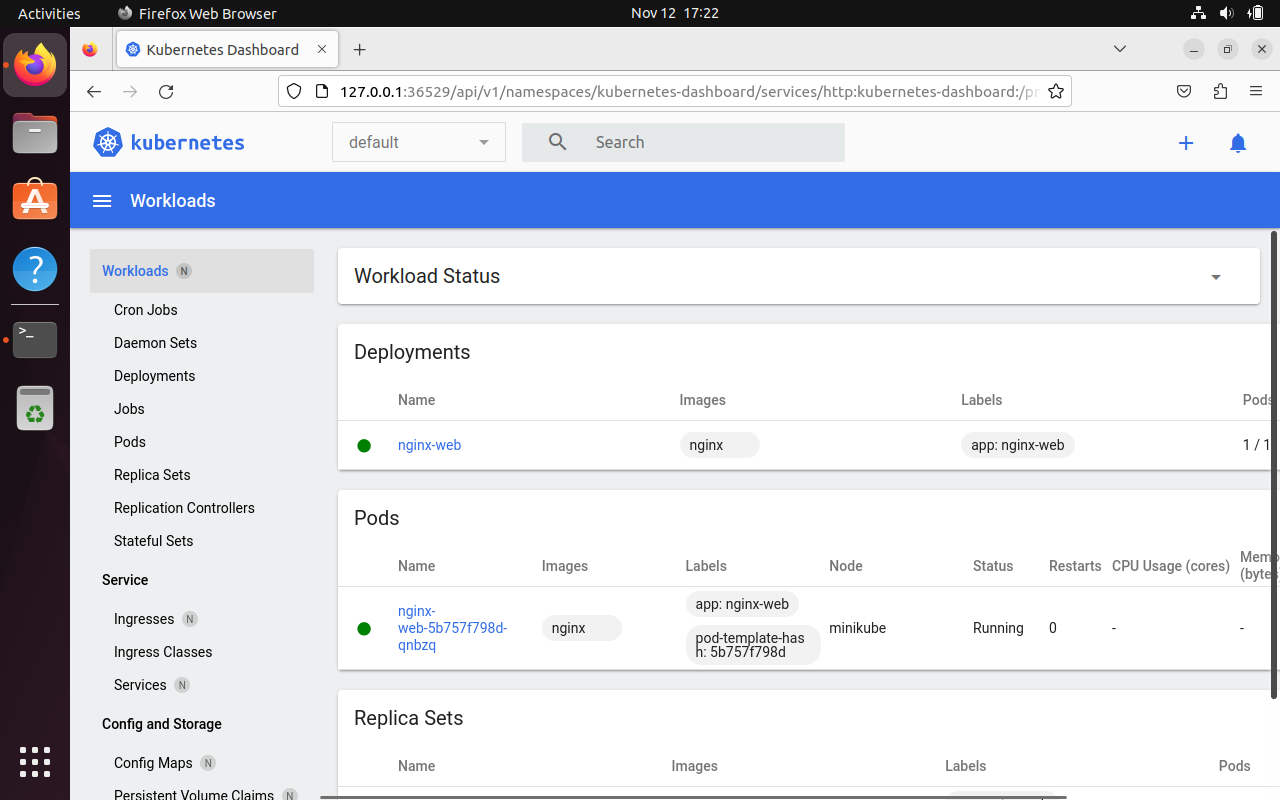
8) Managing Minikube Cluster
To stop and start the minikube cluster, run beneath commands.
$ minikube stop $ minikube start
In order to delete the minikube cluster, run
$ minikube delete
That’s all from this post, we believe you have found it informative and useful. Feel free to post your queries and feedback in below comments section.